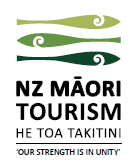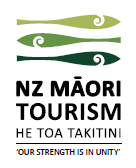The new exhibition in the historic Treaty House at Waitangi Treaty Grounds has been announced as a finalist in the ‘Exhibition Excellence – Social History’ category of the Service IQ 2018 New Zealand Museum Awards. The Treaty House exhibition is part of an ongoing programme of development at the Treaty Grounds aimed at enhancing the visitor experience at New Zealand’s most important historic site.
The 2018 award winners will be announced on Sunday 20 May during Museums Aotearoa's 2018 conference in Christchurch which will be attended by over 300 museum professionals from New Zealand and around the world. This is the second time Waitangi Treaty Grounds has been a finalist in the NZ Museum Awards, in 2016 Te Kōngahu Museum of Waitangi won the award for Best Museum Project.
Waitangi Treaty Grounds CEO Greg McManus is thrilled the exhibition has been named a finalist in the prestigious awards: “It is recognition of all the hard work by so many people in bringing the new exhibition to reality and we are delighted to be a finalist once again. The Treaty House is central to our identity at Waitangi and the new exhibition has been extremely well received by visitors.”
The exhibition was installed by Workshop e, New Zealand’s leading exhibition design company, and opened in October last year. It features several themed rooms with the entrance providing a welcome area, much as it did in 1834 when it was the first British Residency in New Zealand, and it doubled as James Busby’s office. Two rooms are dedicated to the Busby family story and what life must have been like for James, Agnes and their children. The parlour where the finishing touches were made to the Treaty of Waitangi explores Busby’s influence on the English version and his final touches to Rev Henry Williams’ Māori version.
A modern audio visual experience encourages visitors to think about the momentous events that took place in the room and to take in the view outside the house and visualise the scene leading up to the meeting with northern chiefs on 5th February 1840, and the first signing of the Treaty the following day.
Throughout the exhibition, displays are object rich, with large images and digital media presented in a multi-layered approach that caters to all audiences.


